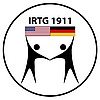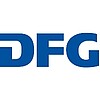A5 (2019 - 2022) - The role of small GTPases Cdc42 and Rap1b in neutrophil transmigration, adhesion, and proteolytic tissue damage in chronic obstructive lung disease
Asthma is a chronic airway disease characterized by inflammation, remodeling and airway hyperresponsiveness (AHR). In a recent study, the Petersen lab has demonstrated that neutrophils play a previously unrecognized role in exacerbation of the asthmatic phenotype including induction of goblet cell hyperplasia and AHR. The molecular pathways controlling neutrophil pathomechanisms as well as the precise site where neutrophils execute tissue damage and remodeling are still ill-defined. During acute inflammation, neutrophils emigrate from the blood vessel by crossing the endothelial barrier into the lung interstitium. In a second step, the cells transmigrate through the lung epithelium ending up in the lung lumen. This coordinated process which involves three tissue compartments separated by two different barriers requires a defined set of cell recognition molecules as well as specific signaling cascades which allow a precise cellular response of the neutrophil in dependency of its respective environment. The Petersen lab could show that recognition of adhesions molecules represents the critical step in neutrophil-mediated tissue damage (Yu et al., 2018). Moreover, the Filippi lab demonstrated that neutrophil transmigration through the endothelial barrier is positively controlled by the small GTPase Cdc42 while a second GTPase Rap1b negatively regulates this process and presumably prevents over activation of these cells (Kumar et al., 2012; Kumar et al., 2014). Recent results from the current IRTG project indicate that these finding cannot simply be transferred to the epithelial barrier and that both barriers are considerably different in their interaction with neutrophils and their function in inflammation.
Aims:
1. To specify the GTPases involved in the transmigration of neutrophils through endothelial and epithelial barriers.
2. To identify the recognition molecules on the barrier cells involved in neutrophil transmigration and protease release.
3. To determine the genetic and inflammatory signatures of endothelial and lung epithelial cells after transmigration and to define their contribution to the asthma phenotype.
4. To examine tthe efficacy of GTPase and adhesion blockers to prevent tissue damage and remodeling in experimental asthma.
Principal Investigators


Student




